
#KREATIVITÄT: ANIKA MEIER IN CONVERSATION WITH AIDAN MELLER AND AI-DA
Today, the robot artist Ai-Da is going viral worldwide as one of her artworks goes up for…
Interview by Anika Meier
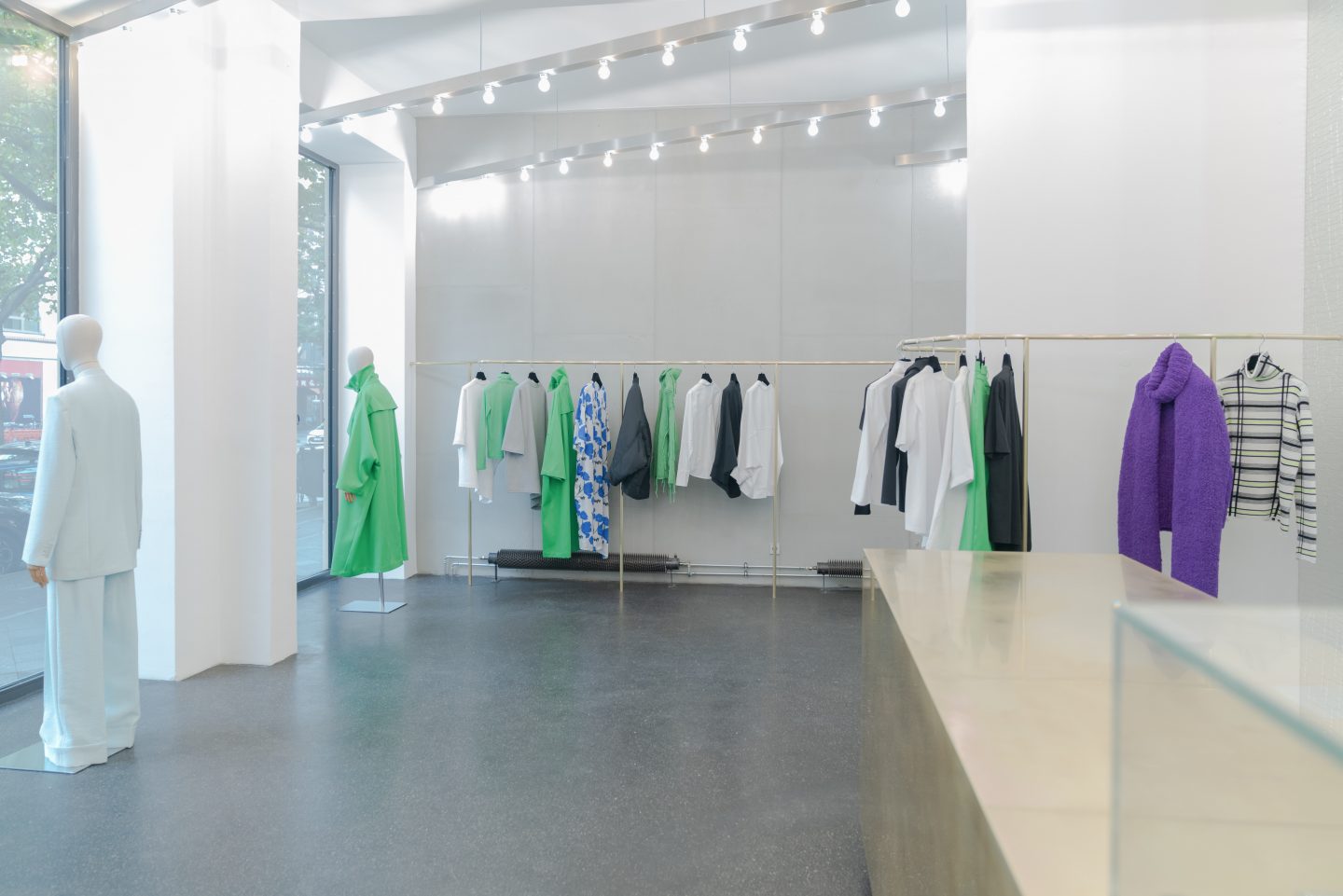
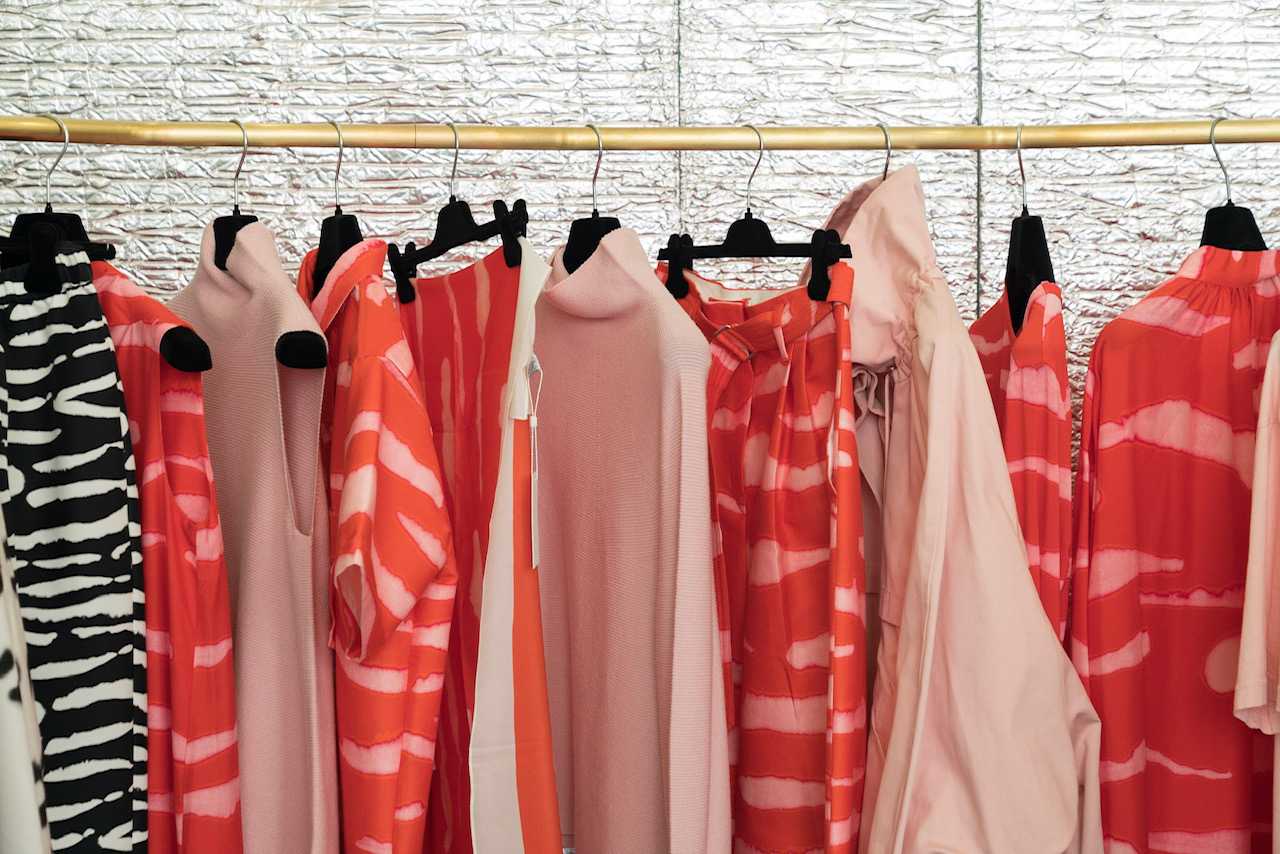
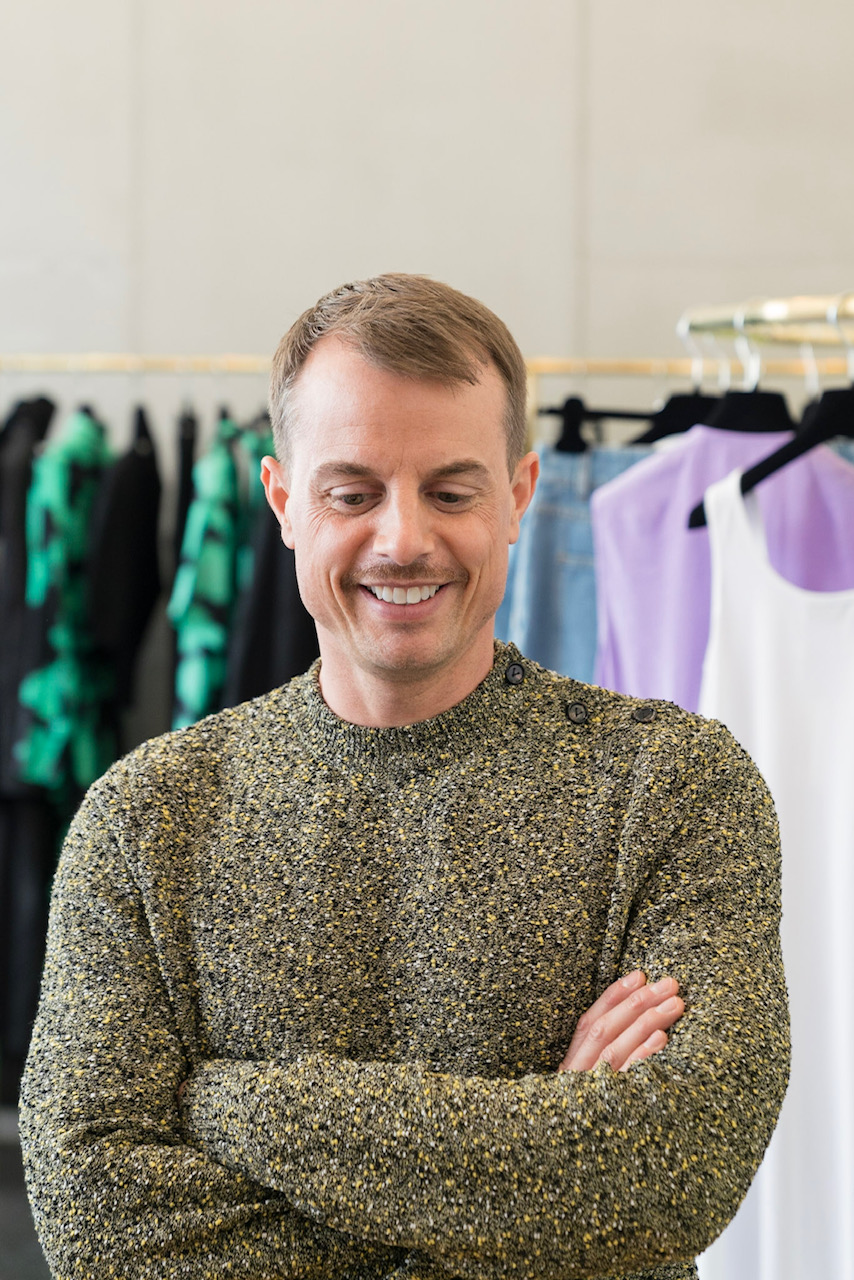
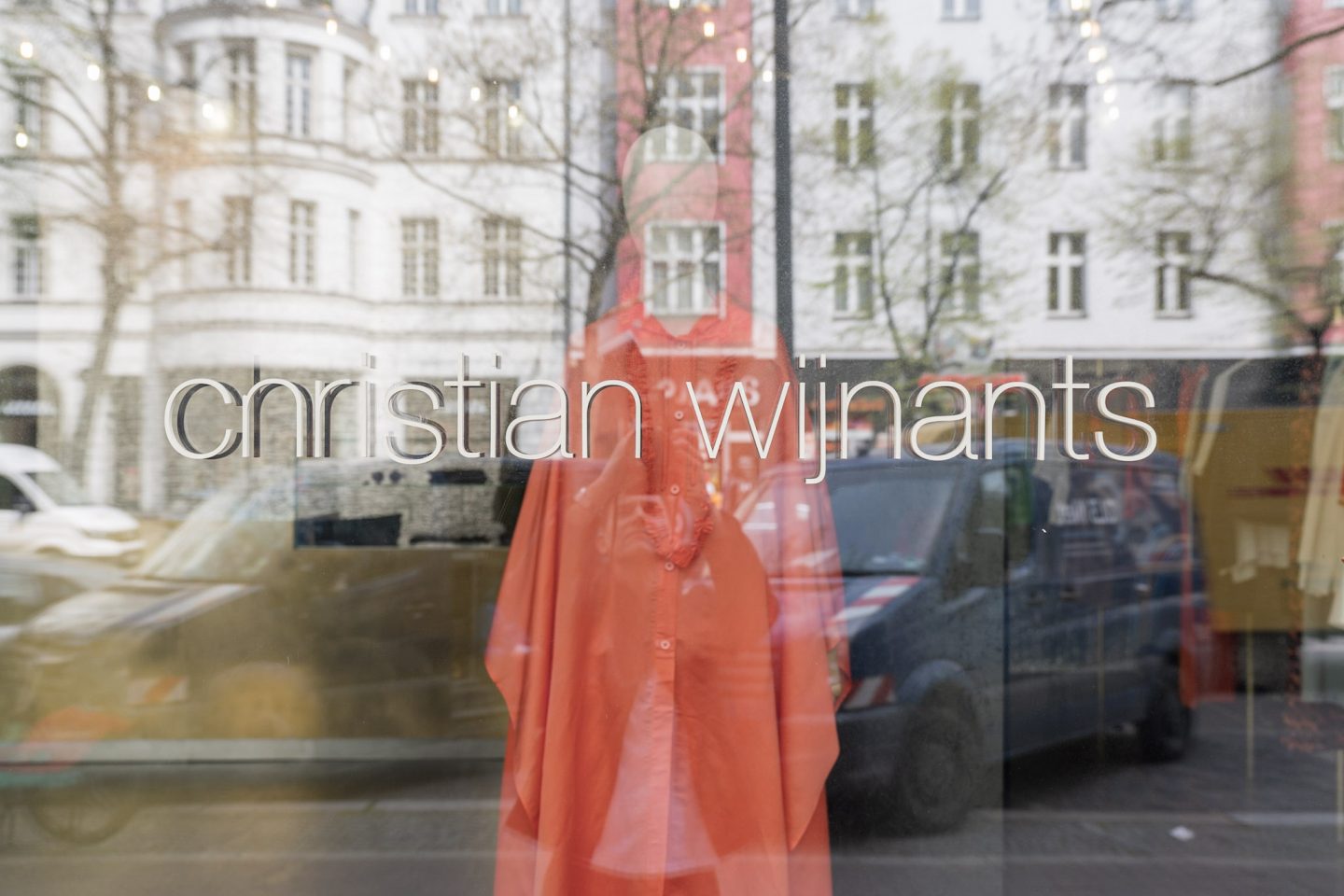
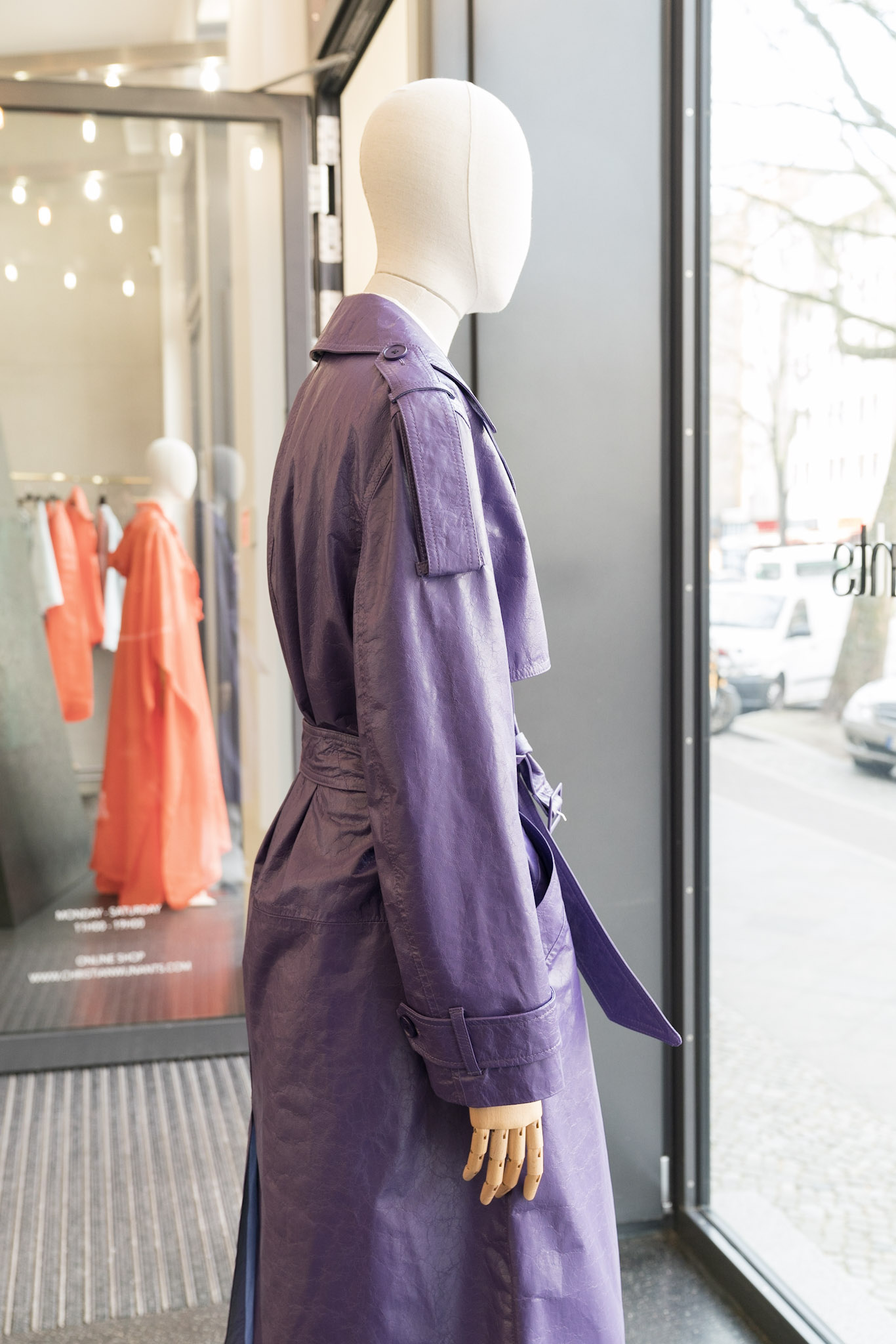
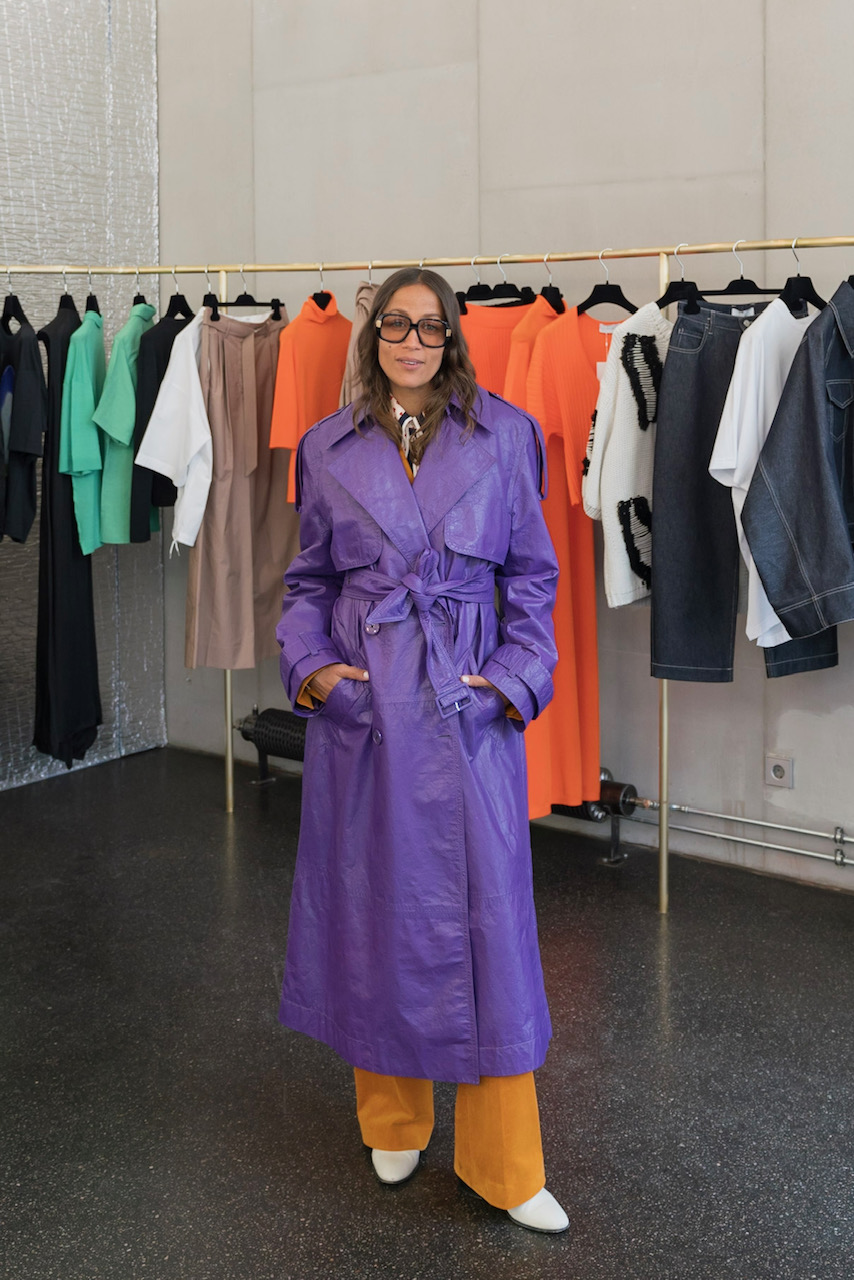
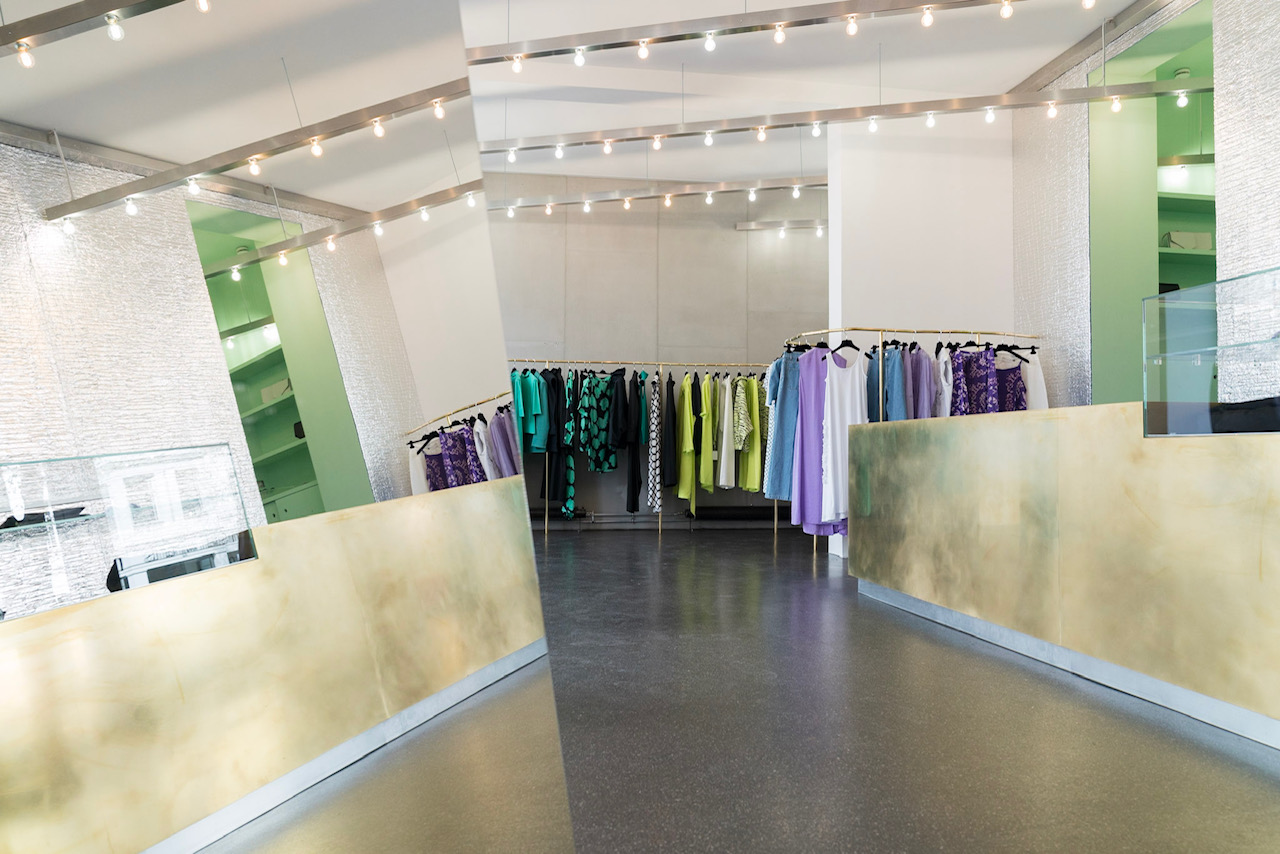
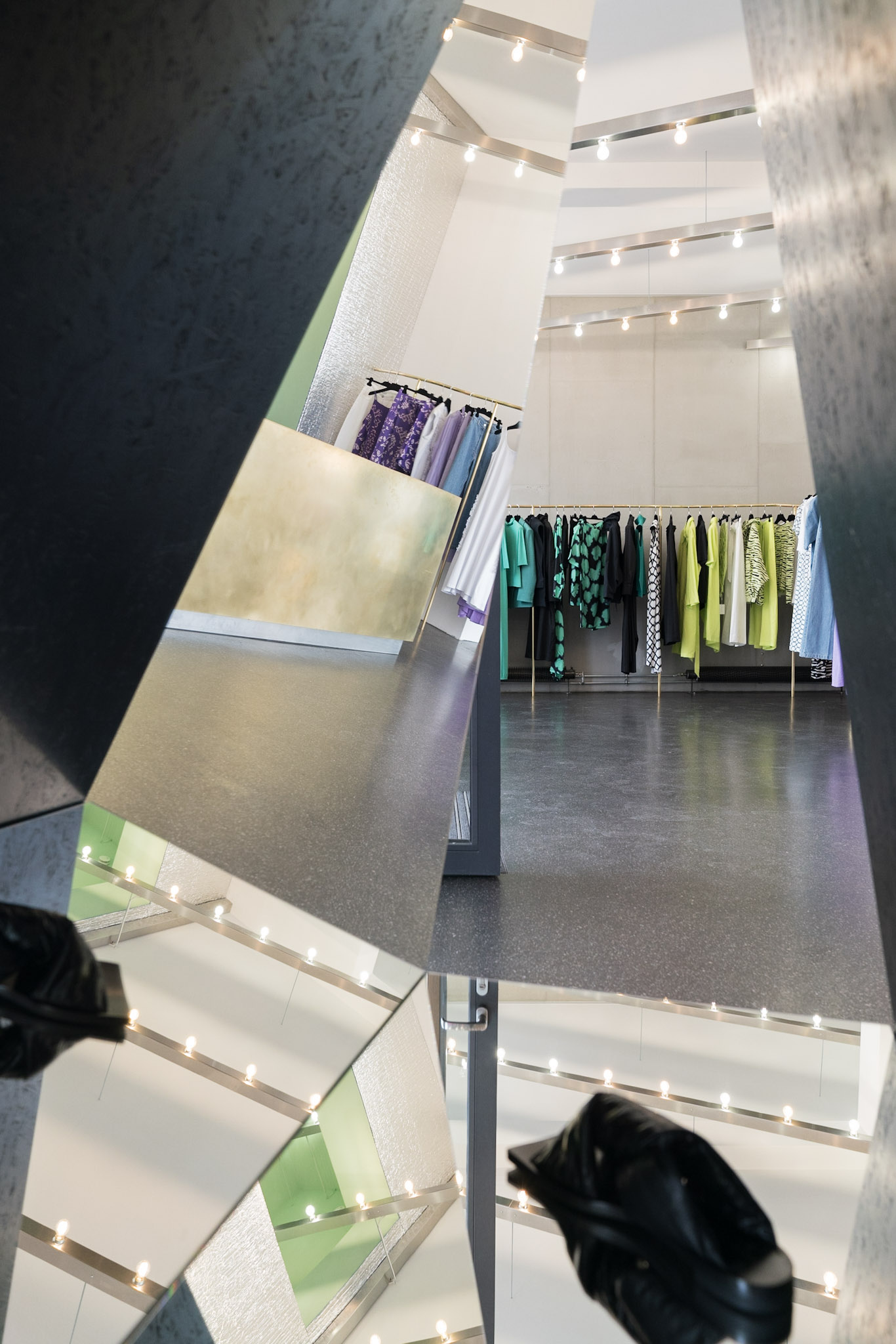
I think a successful piece of clothing is the one that you would like to wear any day at any time. For me, there is always something very pragmatic and real about fashion.
Life is finally back in Berlin from its long, dark hibernation. Whilst the streets are filled with people from all over, hungry to see art, to meet people, to talk life and to just be outside again, I am hiding in a cozy, beautiful changing room corner with Belgian designer Christian Wijnants. He is visiting from Antwerp and brought some industry people together, not only to celebrate the success of the second international store in Berlin’s Potsdamer Straße that officially opened last September during art week, but also his relationship to his loyal customer group. Of course, he chose one of the best times to do so. It is a Saturday afternoon when I meet Wijnants in his store to speak about creativity, sustainability and how to create dreams that are real. Born in Brussels in 1977 and graduating from the Royal Academy of Fine Arts in Antwerp in 2000, Wijnants has this special something in how he approaches fashion, in how he works on his collections, in how he lives and looks at life as a bigger picture. Wijnants founded his label in 2003 and has since then received various awards from the international arts-fashion scene. Mostly known for his innovative knitwear designs, he is currently working on the next steps towards innovation that not only create beauty but serve the world with a more sustainable, minimal vision without letting go of the real passion behind what he does. Expanding his perspectives and learning from the challenges that the pandemic brought is key to him.
This is a fabric that I used in my collection three years ago. I have shorts made out of this fabric for myself too, we also made coats, jackets and skirts and so on. I thought it was a perfect match for the store.
Yes, it reminds me of a hippopotamus or a rhinoceros or the skin of a very big animal (laughs). I also love the dominant shades of green of the store, it feels very inviting and calming. This is how you should feel, entering the store. I think a store is a place where you want to be surprised and excited, but on the other hand, you also want to feel good. I really wanted this store to affect you in a very positive way. Architecture and interior design provoke a lot of emotions, that is also why we loved working with Gonzalez Haase on this. For me, the clash of cold and warm, synthetic and organic, is aesthetically always the most striking, it makes it way more interesting.
Yes, they did. And based on that, we started a conversation. We also wanted to follow that idea to not enter into this space and change everything drastically. It was important for us to keep some elements of the previous architecture, I did the same thing in my private house as well. I sometimes like to think it is a matter of respect as well to not enter a new space and take everything out. And it is also part of my education: my mother, she is from Switzerland, always taught me not to waste anything and if you live up to that vision, you can see how much of what is already there you can still use. That is with everything: if something is still working, why would you throw it away? I feel so frustrated by seeing how much is being wasted in this world.
Yes, we do, but I really love the idea of upcycling. We also try to treat our fabrics in the most sustainable way, for example we reuse or even sell leftover fabrics. But still, it is a huge challenge just for the fact that we all produce four collections a year, this is a lot. You constantly need new fabrics and yarns. Also, we offer stock sales, so we sell old seasonal clothes that we still have in stock for a cheaper price. And then now, we are talking about the idea of having people come back to our stores with their old clothes from our collection so that they could return them and get a new piece. We also want to offer the service of repairing clothing items to prevent our clients from throwing them away. Just recently, I met a customer that was wearing a piece from me which was from four years ago. To see that made me feel so good, I must have done something right that she still wants to wear those pants.
Yes, and these ideas also go against the idea that I want to sell clothes. It is quite a split to do, but really want to support my clients making wise decisions about what they buy, so they can keep and wear it for a long time. I also like the idea that you can wear the same dress in the morning to go to the beach, but you can also use it for many other occasions by just switching shoes or accessories. This is another way of how to be more sustainable, both as a brand to design for this vision, but also as a customer to build your wardrobe based on that.
I always try to not just sell a dream because that is an easy thing to do…
Yes, as a teenager I was a big fan of Dries Van Noten, I worked for him as a design assistant after graduating from school. He taught me a lot about how to find that balance. I always try to not just sell a dream because that is an easy thing to do. If you make a beautiful dress with a hundred thousand beads, created in three weeks by one team of 20 people, it is something so fragile and special that you possibly only wear it once in life. I’m not so interested in that. I think a successful piece of clothing is the one that you would like to wear any day at any time. For me, there is always something very pragmatic and real about fashion. At the same time, that does not mean that a runway collection shouldn’t have pieces that are more special and extravagant, but I just like to have a bigger picture of what I do. I want to create a dream that is kind of real, a dream that you can experience.
There is a common saying that is “the cobbler always wears the worst shoes”. That applies pretty much to me, the way I dress is not the best and with my home, it is the same. I’m quite happy with something minimal even if I like to keep things that have an emotional context, I even keep some pieces at home that I once found on the street. So for example, I own a painting I found in New York when I was 19, or I have some chairs that I picked up from the garbage – I am more that type of person. My home is nothing for magazines to be photographed (laughs).
Yes. Especially in the beginning of COVID, words like minimal or essential were so important. When COVID hit us, we were brainstorming to understand what our brand is really about. We wanted to reduce the costs of the collection and make it smaller. So we wanted to do one trench, one wide and one tight pair of pants instead of doing different versions, and we really thought about the essentials in the lady’s wardrobe to narrow it down to those. That was a very interesting exercise, so to redefine the brand’s vision and to understand what really is superfluous. And that narrow vision we received was something our customers liked a lot, it helped them to filter through all the masses of options out there. And this really left an impression on me, still now, I think about it two, three or even four times before making a new garment. Less is more.
Well, it would be very logic to go to Paris, New York or Japan, for sure. But we always had a very good relationship with Germany and performed super well. So we started to think about which city to go to. I always loved Berlin especially for its unpolished creativity and for the fact that it is not too beautiful, not to expected. That is something I always try to apply to my collections as well, to always have an element of surprise. Berlin has so many layers, so many neighborhoods and people – each layer kind of surprises you since it is not too expected. And then suddenly we found this great location here that got available.
It is fascinating, obviously Antwerp is small, so it’s also more competitive. But what I like about it is that it is quite diverse, everybody has their own style. Think of Raf Simons, Ann Demeulemeester, Dries Van Noten or Walter Van Beirendonck – they all have very different aesthetics.
I think Paris, weirdly enough, is definitely way more interesting than it was five or ten years ago. But I don’t think you have another city or place today where a whole explosion of new designers is happening. There was Vienna of course, like 15 years ago, with Wendy Jim or Bless and there is Paris with Y/Project or Marine Serre, but it is still very different and more of an isolated power that grows there.
Yes, and I also think it is maybe not so important anymore where you are based or where you are coming from. In the past, you were always given this etiquette, people saw you as this Belgian or Japanese or French designer. And that is a good thing, everything is less nationalistic nowadays. You could be Japanese, living in Vienna, and raised in Paris, but your roots are Hungarian – it does not really matter so much anymore. You don’t have to live in the big capitals to be creative. At the same time, the emerging talents in fashion are still quite influenced and shaped by the big fashion schools they attend.
No. It is already ten years ago when I was teaching, I did it only for three or four years.
I like to keep things that have an emotional context, I even keep some pieces at home that I once found on the street.
You know, it’s interesting because I was teaching students that were highly motivated and also felt a bit privileged because the system of Antwerp is very strict and the exam you have to pass to be accepted is challenging too. They only select about 60 students in the first year, then 10 to 15 drop out after the first year, and in the graduation year you only have about nine left. So it’s very competitive, which is not a bad preparation. But then also, the students have a very strong personality, so it’s not always easy. You sometimes have to calm them down so that they can listen to you (laughs).
Yes, I like the idea of teaching for some workshops but with my brand, I really have a lot of work. Sometimes, though, it can be super refreshing to stop thinking about myself and about what I want and desire and instead rather look at other people and try to help and guide them. But it is very difficult, this path is so personal and subjective. Sometimes you see people doing things that you personally don’t like at all, but you still have to help them. It then becomes crucial to make an abstraction of your own taste or your own aesthetics. It’s something that I am obviously not used to in my job because it’s my brand and I have the luxury of doing whatever I like. To help someone grow comes from a whole different perspective.
The beautiful thing about this moment of life as a student is that you develop yourself, your instinct, your taste, your creativity etc. In the first year, a lot happens, and you move and grow a lot – you are usually just 20 years young, so you don’t know your taste that much, you don’t have the maturity or the experience yet. There is nobody judging you for finding out, you can really experiment and that’s the beauty of it. You are being given the opportunity to try many things out and to make mistakes in order to find your own thing. Authenticity is the most important word here, you need to find out who you are and how you are different from the others and how you can be authentic to your vision once you have found it. This makes this journey also emotionally super challenging because of course you receive points and judgment during your studies – it is a school, even if many things are subjective. This can be very hard to take. I personally remember the studies to be quite painful, you keep pushing yourself while also thinking a lot that you are not good enough. You wonder if you are going to succeed and if you will ever make it in fashion, you are not sure whether you are different or special enough from others that already exist. So, all the time, you are questioning yourself. But in the end, this might be with almost all studies, if you are sensitive.
Yes, I feel almost privileged that I studied in a time when there was no internet. To be different from the rest was easier, but what was the rest? You had Dior and all the big houses, then a few other brands, a few designers that were mediatized. I studied in the mid 90ies, so there was Helmut Lang or Ann Demeulemeester – there was space to be different, it was not so difficult. Today, it is all different, there are so many designer and creative people out there and everything is exposed. So how can you be different nowadays? It must be so tough for young students just only to feel different – everything has been done. And I think it is even more difficult now to make an abstraction of all that, seeing all these references, all these inspirations and to say “I don’t care about it, I am doing my own thing.”
Yes, I think so. It doesn’t always have to be new to be good. You have to be cool about it. When I was a student, between 1995 and the 2000s, it was so important to be different. Now, the focus is just another one – it has to be good, strong and emotionally interesting. I mean, you can look at Demna at Balenciaga and see all the references to Margiela for example, and who is really criticizing that? This is also fine. But I think back in the days, you could have not done that.
Yes, I think it is still super important, but authenticity can also mean being proud of the fact that you like a specific designer who shaped your aesthetics and the way you design. It is not about copying, but more about embracing one’s source of inspiration.
No. I also think trends don’t really exist anymore. I remember when magazines reviewed trends back in the days, that was a big thing, but now you can actually make up any trend, even just by accident. But maybe it is also because I am not a journalist and I don’t look at fashion the same way.
I’m looking, but not looking (laughs). About five years ago, I had this weird Instagram love and hate relationship – it was more hate because I felt so bad every time I opened Instagram and saw all these fantastic things that are being done and wondered what to do next. It really stressed me out, I felt so frustrated and confused, so I didn’t follow up that much anymore. Sometimes, I even wonder when starting things if it is my idea or subconsciously something I saw somewhere two or three years ago. If you are subconsciously copying things, that is fine too, but in general I think it is good to not look too much.

Today, the robot artist Ai-Da is going viral worldwide as one of her artworks goes up for…
Interview by Anika Meier

It is frequently lamented by politicians and the public that rural areas lack balanced…
Interview by Marcus Boxler

Exploring How Personal Passion and Professional Insight are Redefining German Fashion on…
Photography by Alexander Fischer